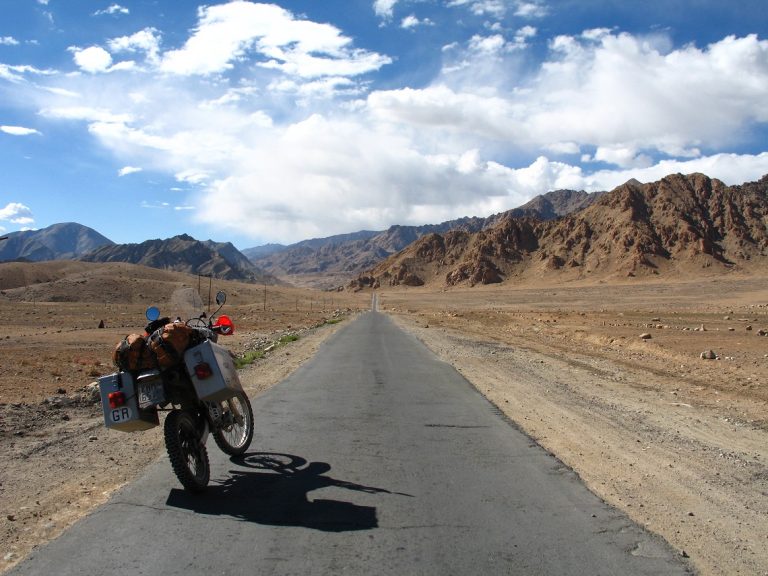RIDING HIGH
Remote mountain regions and jaw-dropping landscapes, rich in culture and world-class off-roading, Elias Vrohidis is exploring the Indian Himalaya
During my two-year odyssey around Asia, the area I remember most vividly is Northern India. The Himalayas are particularly captivating there; the region is open to travellers, quite safe, and ideal for ABRs. I entered India via Pakistan on my humble Honda XR 250S. I spent the first two days in Amritsar, soaking up the atmosphere of the Golden Temple, the beating heart of the Sikh religion.
I was staying in the temple’s facilities for pilgrims and visitors and eating at the free community dining room, a feature of every Sikh temple. My first introduction to Indian cuisine was here; the other residents and I were all sitting on the floor of the dining room in rows while some young guys served us rice, lentils and other vegetables, like potatoes, beans, chickpeas and okras, from huge buckets. It was an experience I’ll never forget.
Survival of the slickest
When I left the temple, I was really looking forward to riding in the Himalayas once again. It was time to hit the road to Manali, the starting point of the route to the mountainous region of Ladakh. I’d encountered some dubious driving in some of the Asian countries I’d visited previously, but nothing could have prepared me for driving in India, especially in the mountains!
Many of the roads here are single carriageway with only one lane for traffic going in both directions. Road etiquette dictates that when traffic is coming in the other direction, the smaller vehicle must give way to the bigger one, and of course, a motorbike is always the smaller vehicle.
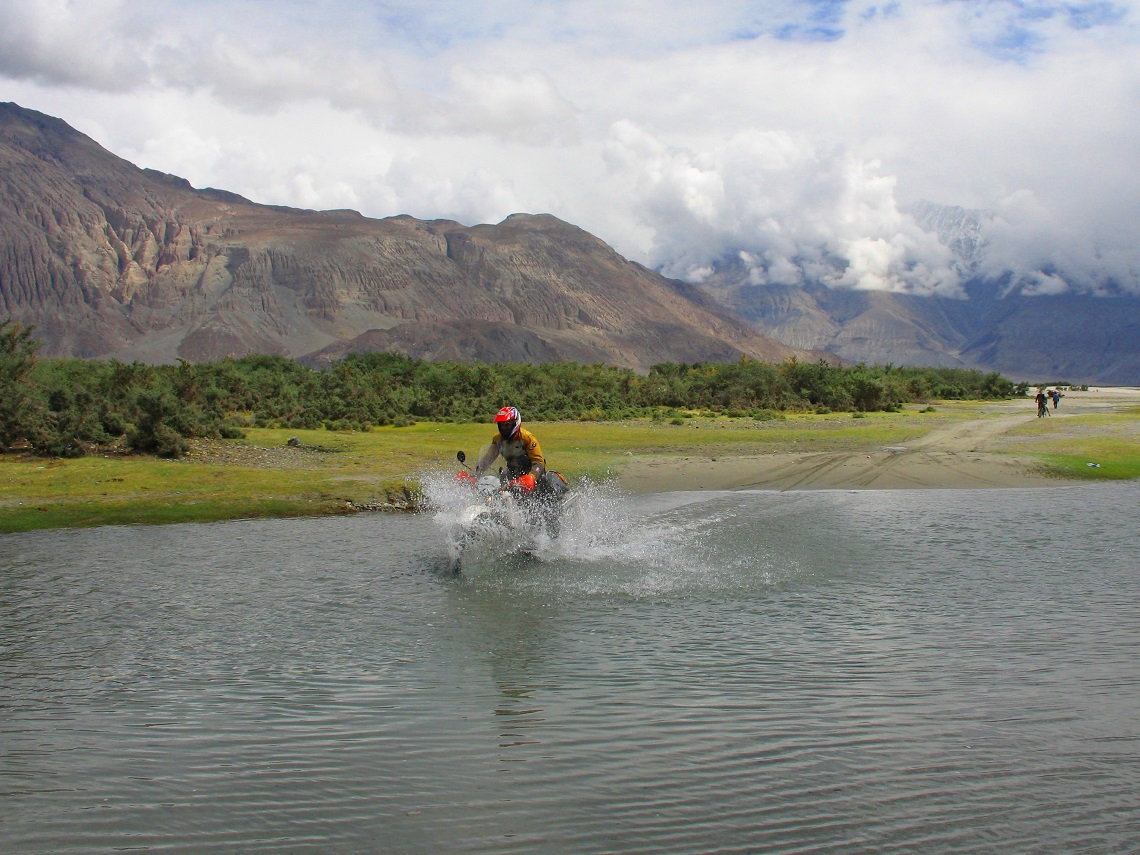
More than once I was caught off guard as I exited a bend only to be confronted by an enormous truck travelling at speed towards me. This called for emergency evasive action, no matter what other obstacles lay in wait for me at the roadside. I saw several serious accidents on these mountain roads and had three minor crashes myself: one with a cow; one with a mule-drawn cart (mules aren’t equipped with ABS yet), and one with a car.
Thankfully, I escaped all three incidents without a scratch. Moving at a constantly slow and respectful speed meant I was able to stay on the road and the worst that happened was that I dropped the bike. She’s a tough old girl, though, my XR.
A rock and a hard place
After the initial shock of my first few days’ riding in India, I welcomed a rest at the natural hot spring in Vashisht, just outside the town of Manali, it was the perfect way to regain my senses. Then, I was ready to hit the road for what was to be the most exciting off-road riding experience of my life. Starting from Manali, I planned to complete a circular route in the gorgeous Himachal Pradesh, which is my favourite Indian state.
The route covered 560 miles over six days, exploring six beautiful valleys which are rarely visited by foreigners: Lahaul, Spiti, Kinnaur, Sangla, Sutlej and Kullu. After setting out from Manali, I started ascending to Rohtang Pass at 3,977m. The temperature dropped quickly, so I stopped at the roadside to throw on another layer of clothing and switch on the heated grips. The last time I’d been so togged up was a couple of months ago when I was riding in the mountains of Northern Iran.
When I set out the scenery had been very green, but as I rode higher, the vegetation seemed to thin with the atmosphere and a dense fog covered the pass. The road here was largely paved until I hit the village of Gramphu where the ugly coloured tarmac ran out and I embarked on one of the most memorable rides of my Asia trip.
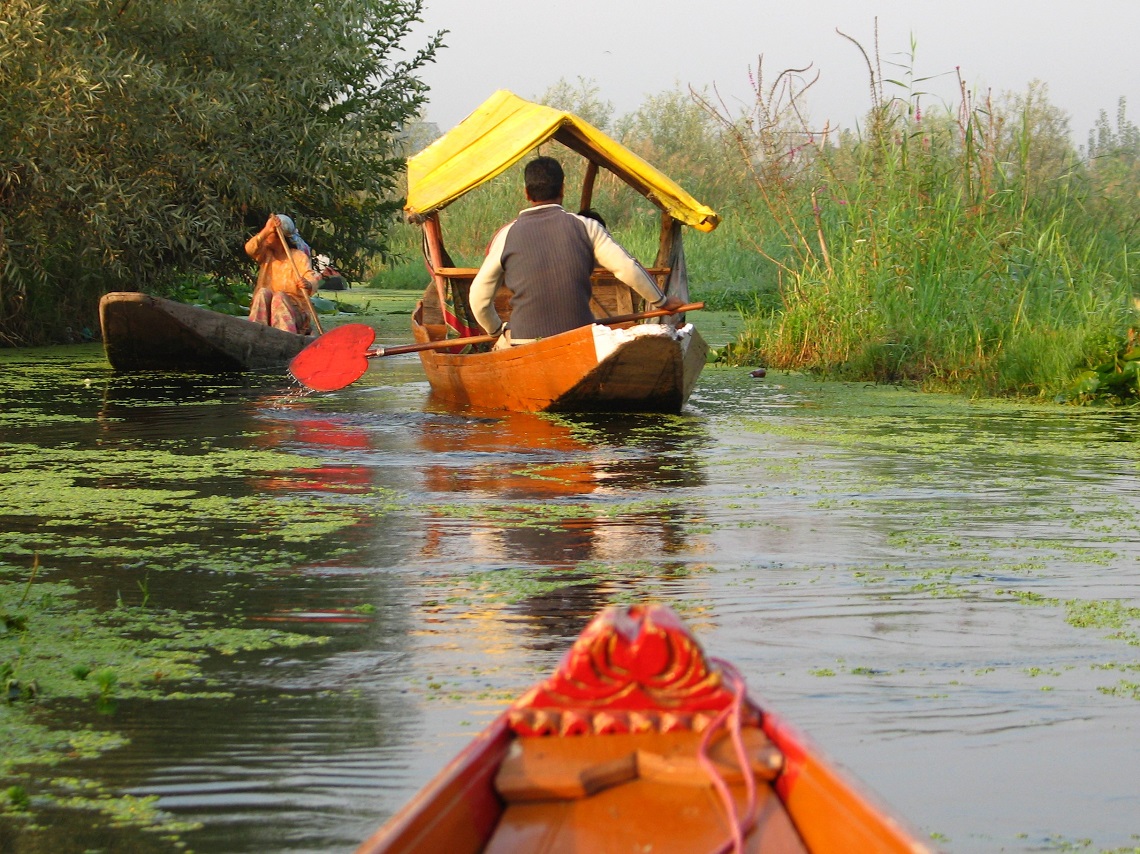
This first section of dirt road was easy enough to still let me enjoy the landscape, but after a while, the riding became more challenging and concentration was paramount. I had to dodge huge rocks that had fallen from the cliffs above, and at one point, my bike became wedged between two enormous boulders which were completely blocking the path.
Unable to dismount, I found myself sandwiched while the footpeg jammed against the rock on one side and the pannier was scratched by the rock on the other. After much wiggling and gentle persuasion, I managed to manoeuvre the bike through the tiny gap; I’m glad I wasn’t on anything bigger, that’s for sure! Further on down the track, I came up against a landslide that had left a steep, muddy camber on the road.
Ordinarily, I’d have taken a good run up and hit this obstacle at speed, to give me the momentum to clear it, but on a track of this nature, with a sheer drop off into an abyss and no one around for miles, I erred on the side of caution and chose to waddle over it slowly. This was also the approach I took to crossing the many rocky streams that cut across my path. The trick here, I learned, was to travel slowly but keep up the momentum as stopping dead in the middle of a crossing spelled disaster.
I also learned that, after five months on the road, my Vendramini boots were no longer waterproof.
Heaven on earth
The shadows were growing longer and it was time to find a nice camping spot to spend the night. The one I found in Lahaul Valley has to be the most awesome place I have ever struck a wild camp. A crystal-clear stream gurgled through the vivid green plain; it was so clear in fact that I was able to sink my canteen into it and drink the cool, natural water straight from the stream. I was at 4,200m altitude and the air was perfectly clean.
When darkness finally fell, I was amazed by a full moon appearing behind the high peaks and the millions of stars overhead. That night, I crawled into my tent and fell asleep to the gentle sound of the stream, the only thing to break my solituide.
The next day, I followed a rough dirt track to Chandratal Lake. Its name means ‘Moon Lake’ and the landscape surrounding it is truly unearthly. The combination of turquoise waters and towering mountains is an image that I won’t easily forget. It’s such a remarkable place that I spent a whole morning here just taking in the views.
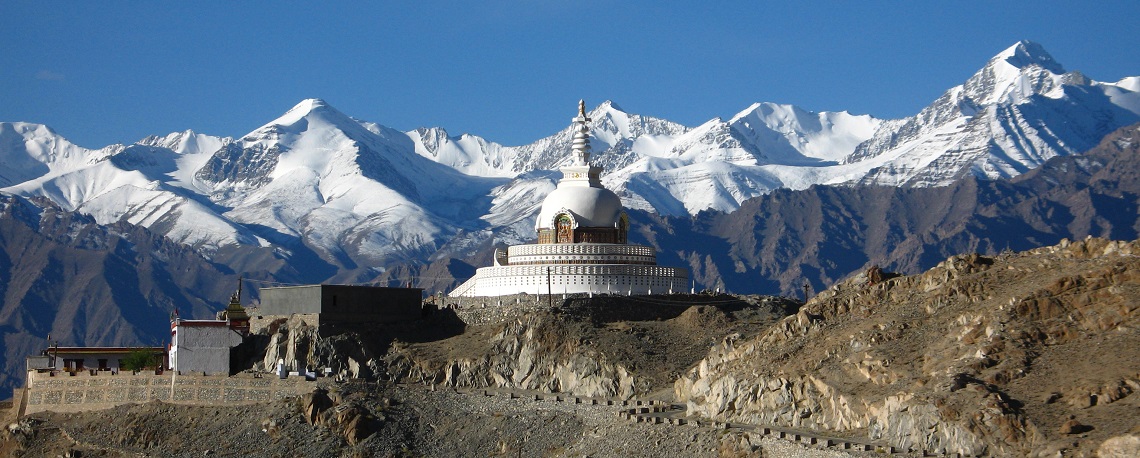
I had some aubergines, so I took out my small stove and my pan and fried them. They’re probably the best aubergines I’ve ever eaten. I continued riding towards Kaza. Just a few miles short of my destination, I found a beautiful camping spot on a slope overlooking the Spiti Valley River. The Buddhist monastery of Ki Gompa sits on the top of a hill on the other side of the river.
This was the first Buddhist monastery I’d ever visited and I was lucky enough to be there during the morning liturgy. It was very tranquil, listening to the monks chanting, hitting drums or bells and blowing trumpets. Just 7 miles further uphill from Ki Gompa is the small village of Kibber, once part of the salt trade route between India and Tibet. Situated at 4,205m it claims to be the highest village with a motorable road and electricity!
On a high
The other valleys I visited were wonderful, too. Covered in thick forests, the cliff-hanging road offers great vistas that make you feel like you’re flying over the canyons. Sutlej Valley is very green; it wasn’t until I arrived here that I realised how much I’d missed the smell of pine trees. It was terrific riding past waterfalls and through natural tunnels that have been cut by the water between the rocks. I visited many interesting Hindu temples en route, including the fort-like Kamakhya Devi Temple in Kamru and the grand Bhimakali Temple in Sarahan.
The architecture in these valleys is reminiscent of ‘Hindu Gothic’ style if there is such a thing. Alternating layers of timber and stone are used as earthquake-proofing and the roofs are bell-shaped. The next day, I used a little-travelled road through Jalori Pass at 3,200m. The forest here was so thick that it blocked out the sun completely. It was another breath-taking ride I enjoyed before returning to Manali. The high road from Manali to Leh has become a popular one in the Indian Himalayas.
Some people rent a motorbike just for this route and even cyclists enjoy it, despite the fact that it climbs to 5,358m! It’s a 300-mile route, which means you have to be self-sufficient on fuel in order to attempt it. This is where my 22-litre aftermarket tank came into its own, giving me 400 miles of go-go juice. Leh is the main town of Ladakh region. This area is full of old Buddhist monasteries and is so unlike the rest of India that it’s often referred to as ‘Little Tibet’, as its topography and culture seem to share far more similarities with this country.
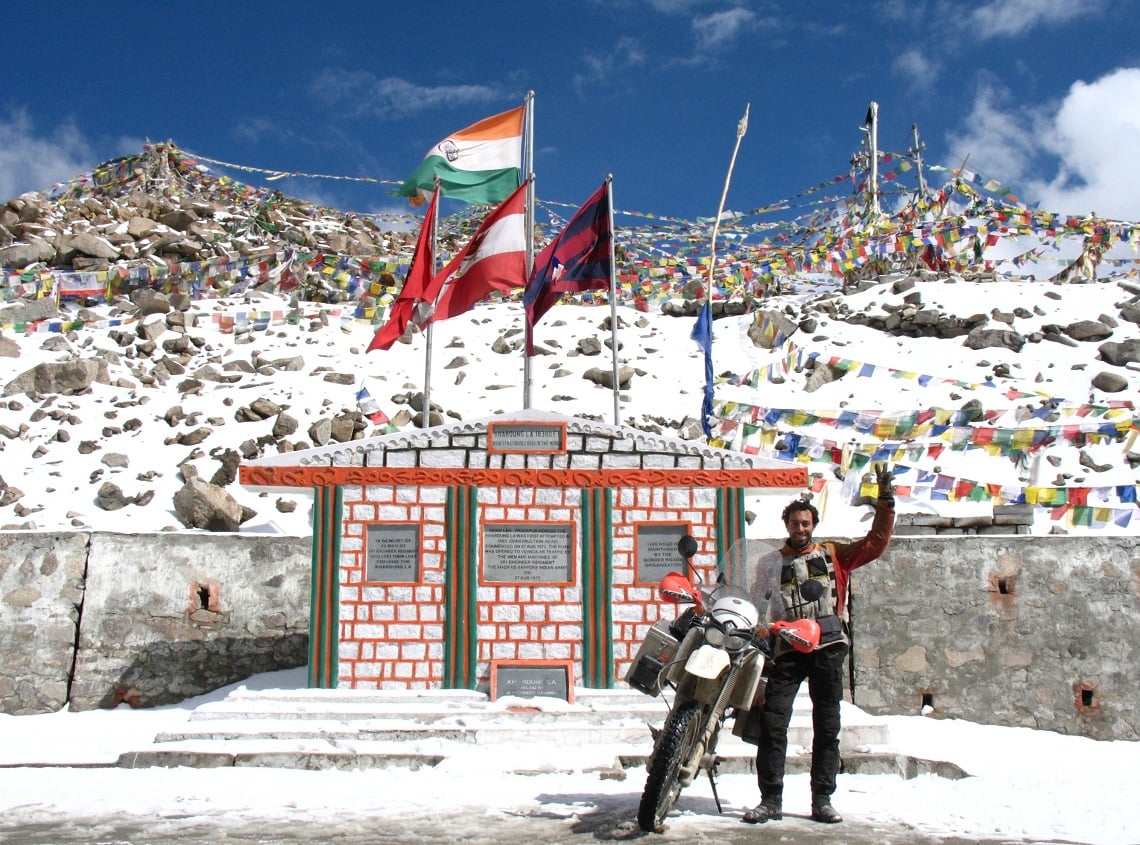
In many ways, I think that ‘Little Tibet’ is a much more interesting place to explore nowadays than the real Tibet since the latter is occupied by China, which means travelling is very restricted there. At 5,358m, the Khardung Pass is widely, although incorrectly, considered the highest motorable road in the world. There are many passes in similar elevation in Ladakh and I rode through a lot of them.
At the other side of Khardung Pass is the extraordinary Nubra Valley, which conceals a small desert with sand dunes between eternally snow-capped mountains. A permit is required to visit the region, as it’s very close to the Chinese border, but it’s definitely worth the effort to obtain one. On the way to what is considered to be the world’s third-highest motorable road, I had to ride eight miles on a thin film of snow.
It was only September, but at this altitude, you can expect snow at almost any time of year. The snow was fresh powder, and as there wasn’t any tarmac underneath it, it wasn’t slippery to ride through. The weather in the mountains can change very quickly, which worked in my favour because by the time I reached the spectacular Pangong Lake, the sun was out and sparkling on its waters. Pangong is immense, stretching 80 miles in length – three-quarters of it actually lies in Tibet. Its brackish waters change colours according to the weather.
When it’s cloudy the lake looks grey and sullen, but on this day, it gleamed a wonderfully deep iridescent blue-green.
Rooms with a view
It was so beautiful and remote here that I camped for two days, exploring the region and enjoying this incredible place. By the time I was ready to leave, the cold and altitude had got the better of my bike’s engine and it was more than reluctant to start. The battery was quickly exhausted and my next option was to try and jump-start the bike on the dirt road.
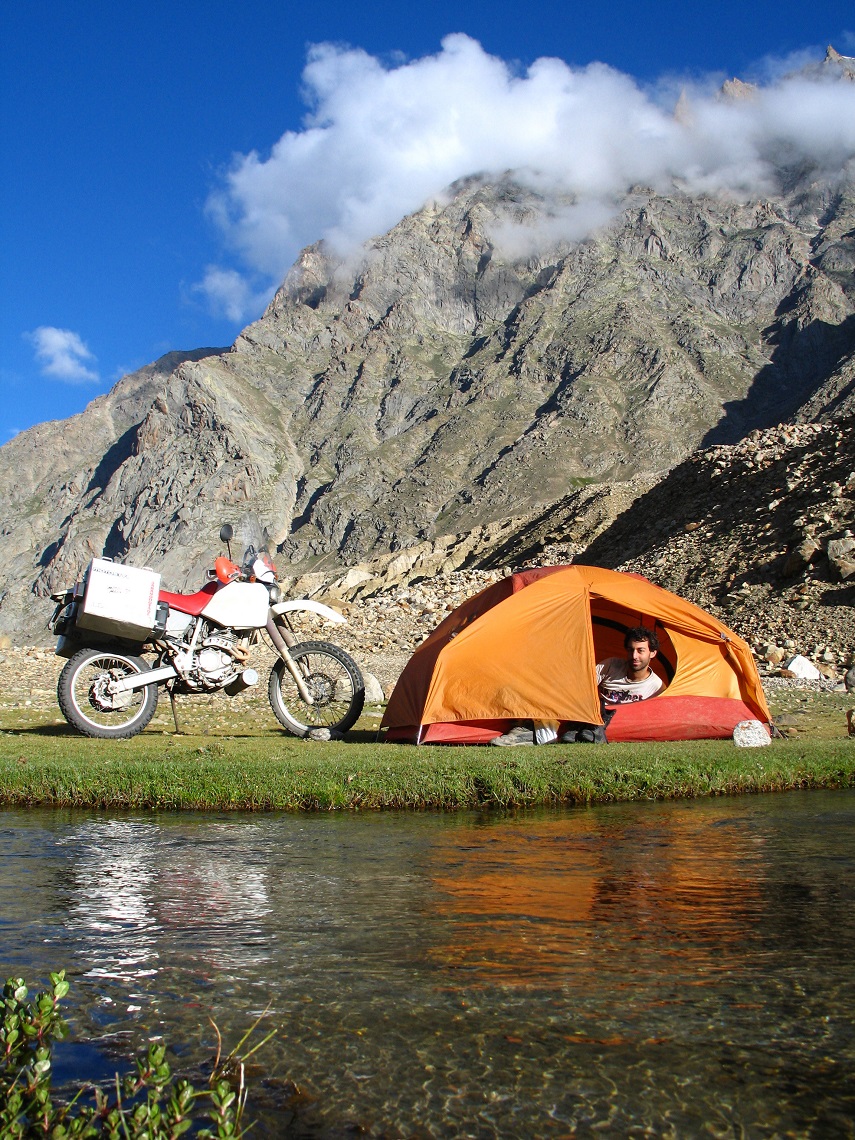
Solitude comes at a price, however; I now needed someone to help me push the bike fast enough to get it going again. I waited on the ‘main’ dirt road for hours, but nobody came. By afternoon, I’d almost given up hope. Then, I remembered that I’d passed a military camp on my way into Pangong, so I started walking out towards it to try and find someone who might be able to give me a hand.
After an hour, I met two guys from the camp on the road, and with their help, we easily jump-started the bike. This, and many other similar incidents, taught me that I should never again attempt such a bike trip on something which isn’t equipped with a kick-start.
A little-known but beautiful route runs from Leh to Srinagar via Kargil, and there are some very picturesque villages on the way; Basgo is one of them.
The whole village is made out of mud and entwined with narrow, winding paths that lead to the top of the hill where the 400-year-old Buddhist monastery is situated. That night, I wild camped just outside of Drass town, one of the nearest settlements to the disputed border between Pakistan and India. During the night, I heard gunfire, which sounded alarmingly close by. I went out of my tent to investigate. Had the war started up again?
It turned out to be a military exercise, of course. It finished after a while, so I could go back to sleep again, but the experience was a stark reminder of what the people in this region have lived through. A few days later at Zoji Pass, the high, brown, stony mountains of Ladakh gave way to the lower green forests of Kashmir. After weeks in altitudes of over 3,500m, I was gradually feeling the heat of the lower mountains again.
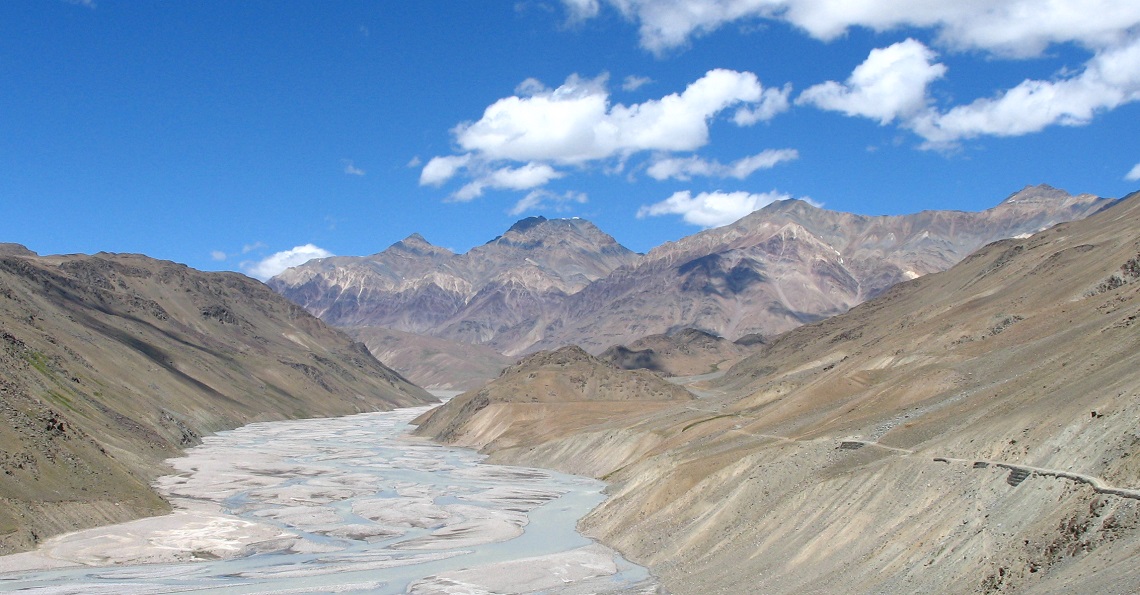
Srinagar is the capital of Kashmir, a city famously proclaimed ‘a paradise on earth’ in the 17th century by Mughal Emperor Jahangir. Built around Dal Lake, Srinagar is like an Asian version of Venice. During its British colonisation from 1858-1947, Kashmir’s Maharaja refused to grant the British permission to own land in the region. To get around this, the colonists, who were very at home in Kashmir’s cooler climate, built houseboats on the lake.
These vessels were up to 20m in length and each one was designed to resemble a little piece of England. They featured luxurious living rooms filled with the finest furniture and were ornately decorated. Nowadays, these floating palaces offer the best accommodation in Srinagar. One of my favourite days in Srinagar was spent exploring the lake in a small gondola-like boat with the traditional heart-shaped paddle. I lost hours paddling between lotus flowers and visiting small islands.
When the time came to leave Srinagar, I headed towards McLeod Ganj. The bridge I’d intended to take had been destroyed, which left me with no other option but to take a long and enjoyable detour into the mountains. I spent three days meandering along this seldom-used route through Dalhousie and Khajjiar Pass, wonderful forests, and further down the track, Chamba, with its exquisitely carved medieval Hindu temples. Sometimes, fate works in our favour on the road and the best thing to do is just to go with it, unquestioningly. Soon I was on the Indian plains again, to explore more of the country before heading off to Nepal…
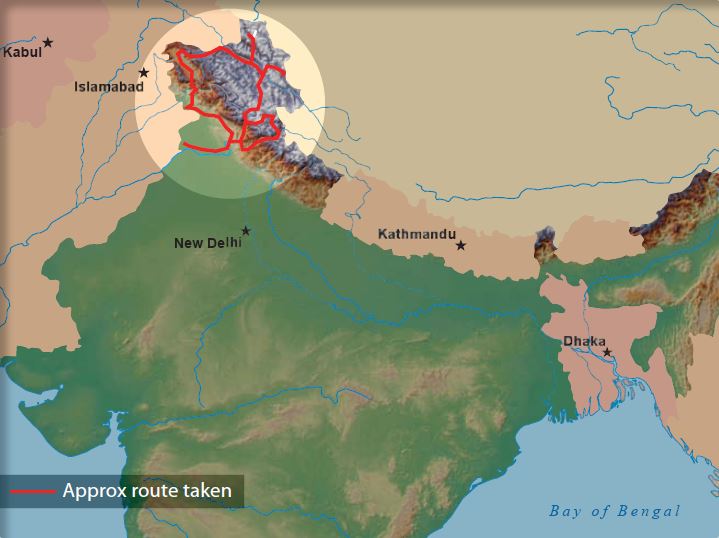
Who’s Riding
Elias Vrohidis, 28, is from Thessaloniki, Greece. He rode through North India as part of a 27-month exploration of Asia. His epic ride saw him travel through 14 countries including Iran, Pakistan, India, Nepal, the Stans, Azerbaijan, and Georgia. “My inspiration for wanting to make this dream journey is my love of nature
and people,” he says. “Spending most of my time on the road wildcamping or as a guest in people’s homes, I had the chance to live the way locals do, face the same difficulties, understand their point of view and be one of them. I want to diminish the myths and prejudices that keep people divided.”
The Bike
I completed this trip aboard a 1997 Honda XR 250S. I rode the bike over what are considered to be the world’s three highest passes, including Khardung Pass at 5,358m, and it never gave up! The bike’s modified suspension handled the rocky terrain very well. Before departure, I fitted a WP rear shock-absorber with a harder spring, along with harder springs in the front forks.
With all my gear, I was carrying much more weight than the bike was designed to cope with, so these modifications were important. I also reinforced the sub-frame for this reason and I was really pleased with the way the set-up performed. The aftermarket fuel tank gave me around 400 miles between fill-ups.
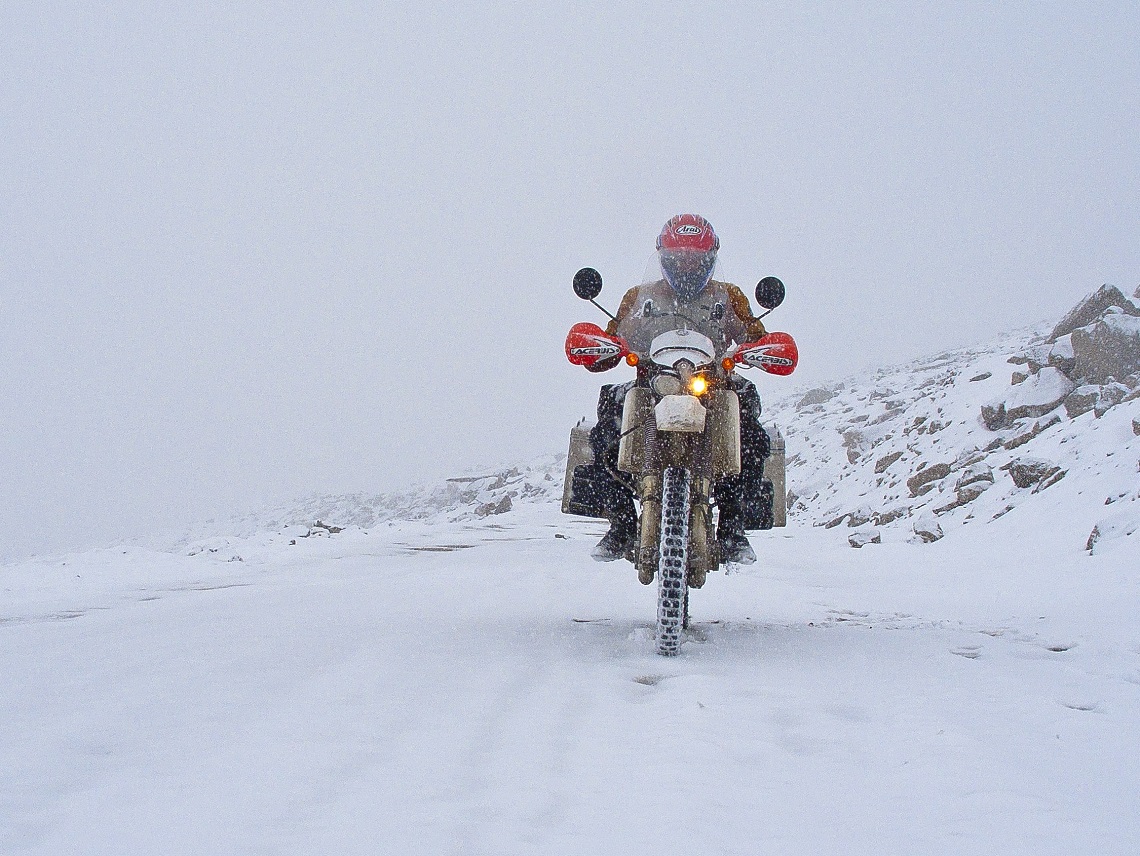
Photos: Elias Vrohidis
_____________________________
Want to do this?
How long does it take?
Elias rode from Amritsar, northwest India, to McLeod Ganj, Kangra, in the northeast. The trip was 2,500 miles and took him 32 days travelling at a leisurely pace.
When to go?
Elias made his journey during September. The Himalaya have an Alpine climate with cold winters and warmer summers, but due to altitude, snow can fall at any time of the year and the weather is very changeable. If you’re travelling in India during the very hot summer months, the northern Himalayan region offers cool relief.
Get there:
If you don’t have the time or funds to make a big overland trip like Elias, you can ship or airfreight your own bike into Delhi, North India. James Cargo Services Ltd, can transport a BMW R 1200 GS motorcycle to arrival into Delhi for £760 by ocean or £1,225 by airfreight. See www.jamescargo.com for more. If you’re looking to hire, an Enfield is an ever-popular choice, or if you’re after something a bit more robust, a modern Japanese or Indian bike, like 220cc Hero Honda or Bajaj, is also an option.
Accommodation:
Elias wild camped in the mountains and took all the necessary equipment to be self-sufficient: a strong tent, warm sleeping bag, stove, kitchenware, food and water.
Paperwork for you:
You will need a Visa, passport, and international driving licence to ride in India. Make sure you get travel insurance that covers riding abroad, emergency evacuation and repatriation, too.
Paperwork for the bike:
You will need to obtain a Carnet de Passage organised through the RAC (www.rac.co.uk) for temporary import of the bike into India, your V5C, and a
copy of your current MOT certificate. You’ll also need to purchase insurance for the bike on arrival; be sure to double-check that this covers the capacity of motorcycle you’re riding.
Is it for you?
Riding at this kind of altitude is very demanding on both the rider and the bike, so it’s important that you’re in good physical condition and allow yourself time to acclimatise slowly to the change in atmosphere. A head for heights and also some good off-road riding experience are essential. The vistas here are astounding and if you’re into wild camping and getting away from it all, this is the perfect place to seek solace.
Want some company? There are myriad motorcycle tour operators in this area with expert guides and hire bikes on hand. See www.motorcyclesandmountains.com.
_____________________________
Pack your panniers!
ABR Mike Stevens, retail director of Costwold Outdoor, has a BMW R 1150 GS; here are his essentials for wild camping in the Himalaya
 Wild camping is hard in India due to overpopulation. It’s very difficult to find a patch on the plains without houses or fields, but happily, the Himalayas are a different story! Remote, little-visited and sparsely inhabited, it’s an ideal place to wild camp and enjoy the freedom of being self-sufficient in the outdoors.
Wild camping is hard in India due to overpopulation. It’s very difficult to find a patch on the plains without houses or fields, but happily, the Himalayas are a different story! Remote, little-visited and sparsely inhabited, it’s an ideal place to wild camp and enjoy the freedom of being self-sufficient in the outdoors.
When travelling on a budget, cost is an important consideration, but you also need to consider the comfort and reliability of the kit you’re using. On a smaller capacity bike, the size and weight of your kit is paramount, as is its longevity. No matter how tight your budget, expect to invest in a good sleeping mat and bag; you won’t regret it…
Tarp: Vango Adventure Tarp, £30 (including a pole)
A great wild camping solution, this flexible, waterproof, lightweight tarp will provide an effective shelter or extra living space if combined with a tent or bivi bag.
Bivi bag: Rab Storm Bivi, £70
A tarp too airy for you? Then consider a bivi. The Rab Storm has a breathable upper, waterproof base and enough space for a mat; this is one of the lightest and most compact ways to camp.
Sleeping bag: Easy Camp Cosmos 150, £20
A super-budget bag for warm conditions, its small pack size and other great features mean it’s ideal for warm wild camping and even the odd rally. A proper bargain!
Sleeping mat: Mountain Equipment Helium Mat 2.5, £43 (SRP £70)
A tried-and-tested favourite, and at only 14x27cm packed, this continues to be a stalwart for Cotswold Staff, because it works!
Mosquito net: Lifesystems Micro Net, £27.50
Worth considering when sleeping out in the open or under a tarp. With just one hanging point, it’s remarkably simple to us. Don’t forget some repellent! Lifesystems Expedition Plus range starts at £7.50 for 100ml.
Water purifier: Aquapure Traveller, £35
A handy personal purifier bottle that’s good for 350ml of water.
Luxury Item: Primus Omifuel Stove, £155
A small grill over a campfire will do the job, but for a bit of home comfort, this light, reliable and flexible stove will get a meal going wherever you are using a variety of fuels.


